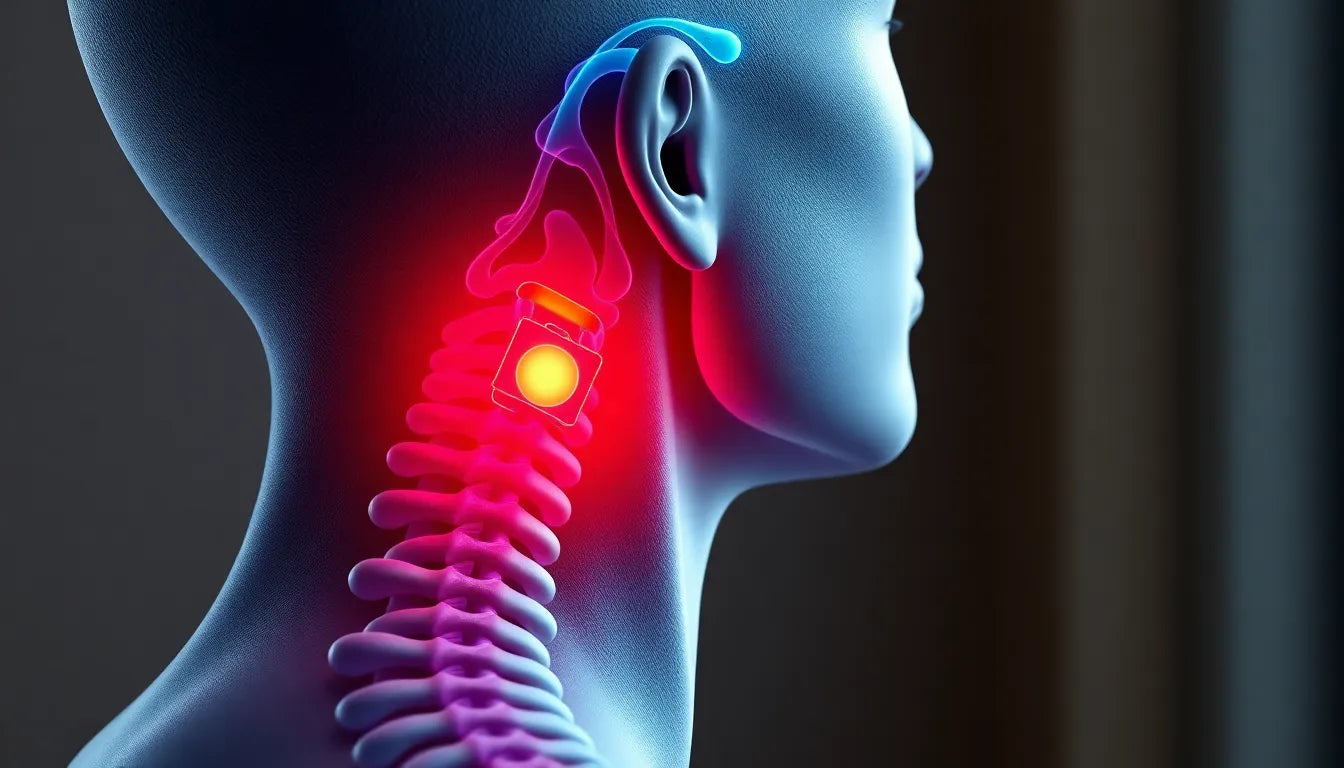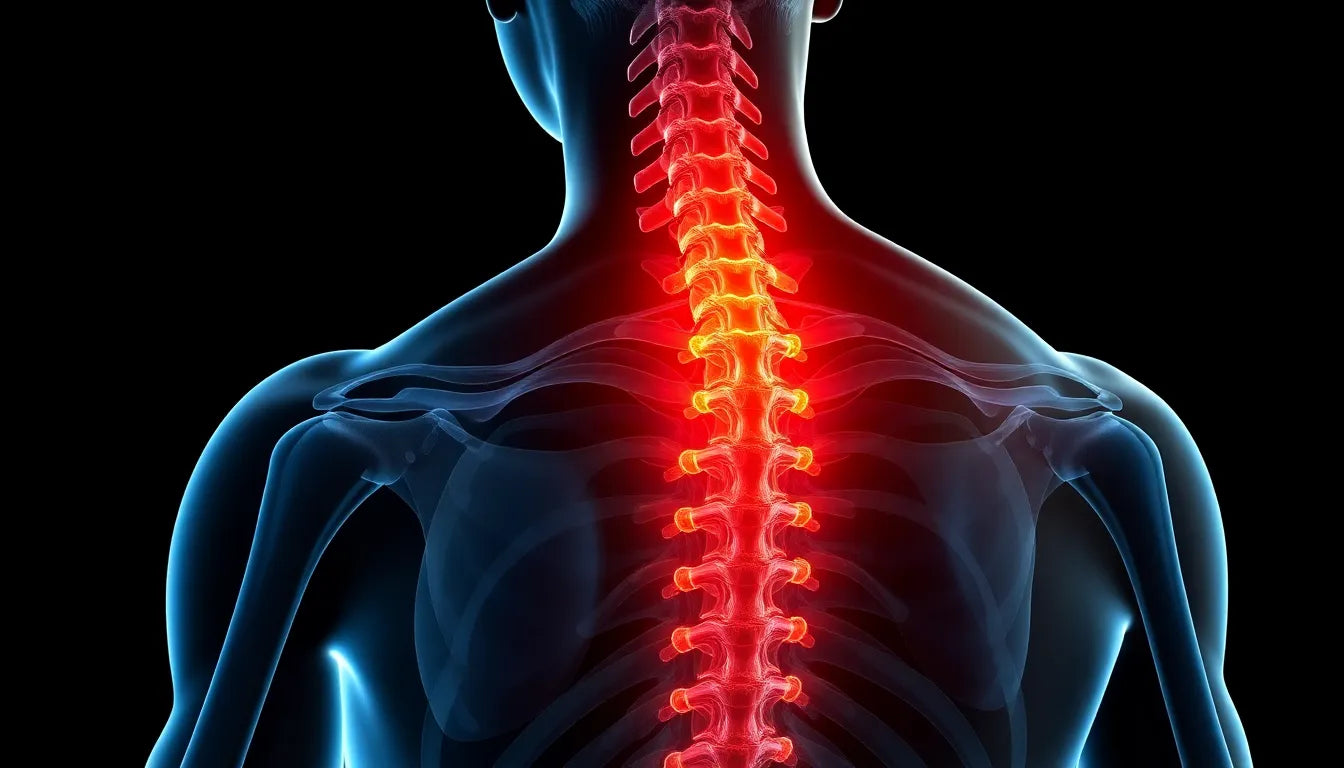Spondylosis neck, commonly referred to as cervical spondylosis, is a degenerative condition that primarily affects the joints and discs in your neck. As a prevalent age-related issue, it impacts a significant portion of the adult population, especially those over the age of 50. This condition is characterized by the wear and tear of the cervical spine, which can lead to discomfort and a range of symptoms that affect daily life.
Understanding the prevalence and symptoms of spondylosis neck
With an increasing number of individuals experiencing spondylosis neck, it’s important to understand its commonality and impact. Studies indicate that more than 85% of people over the age of 60 are affected by this condition to some degree. The symptoms can vary widely but often include persistent neck pain, stiffness, and headaches. In some cases, individuals may also experience tingling or numbness in the arms, which can be indicative of nerve compression.
Recognizing these symptoms early is crucial for managing the condition effectively. While spondylosis neck is a natural part of aging, the discomfort it brings can significantly affect one’s quality of life. This makes it essential to explore effective management strategies that can alleviate pain and improve functionality.
The role of ergonomic solutions in managing neck pain
Ergonomics, the science of designing and arranging things people use so that the people and things interact most efficiently and safely, offers promising solutions for those suffering from spondylosis neck. By focusing on improving posture and reducing strain, ergonomic solutions can play a pivotal role in managing neck pain. Adjustments in daily routines and workspaces can make a significant difference in how one experiences and manages pain associated with this condition.
Could a simple change in your daily routine unlock relief from chronic neck pain? This question is at the heart of exploring ergonomic solutions. By integrating ergonomic principles into your lifestyle, you can potentially reduce the strain on your neck and alleviate some of the discomfort associated with spondylosis neck. This approach not only aids in pain management but also enhances overall well-being by promoting healthier habits and environments.
delving deeper into spondylosis neck symptoms and diagnosis
Spondylosis neck presents a spectrum of symptoms that can vary in intensity and impact. Commonly, individuals experience persistent neck pain, which is often accompanied by reduced mobility and stiffness. These symptoms can significantly hinder daily activities, making even simple movements challenging. Additionally, headaches are frequently reported, potentially due to the strain placed on the cervical spine. In more severe cases, nerve compression can occur, leading to symptoms such as tingling, numbness, or weakness in the arms and hands.
Diagnosing spondylosis neck typically involves a combination of clinical evaluation and imaging techniques. Healthcare providers may begin with a physical examination to assess range of motion, reflexes, and the presence of any neurological symptoms. To confirm the diagnosis and evaluate the extent of the condition, imaging tests such as X-rays, MRI, or CT myelography are often employed. These tools provide detailed images of the cervical spine, helping to identify bone spurs, disc degeneration, or other structural changes contributing to the symptoms.
exploring treatment options for spondylosis neck
Treating spondylosis neck involves a multi-faceted approach tailored to the severity of symptoms and individual patient needs. Medical treatments often start with nonsteroidal anti-inflammatory drugs (NSAIDs) to reduce inflammation and alleviate pain. In cases where pain is more severe, corticosteroids may be prescribed to provide more potent anti-inflammatory effects. Physical therapy is a cornerstone of treatment, focusing on exercises to strengthen neck muscles, improve flexibility, and enhance posture.
For individuals seeking complementary therapies, options such as massage, acupuncture, and chiropractic care can offer additional relief. These therapies aim to reduce muscle tension, improve circulation, and promote relaxation, contributing to overall pain management. In rare cases where conservative treatments fail to provide relief, surgical intervention may be considered. Surgery is typically reserved for severe cases involving significant nerve compression or spinal instability, where it can help alleviate symptoms and restore function.
ergonomics: a key player in managing neck pain
Ergonomic solutions are increasingly recognized as an effective strategy for managing neck pain associated with spondylosis neck. By prioritizing proper posture and reducing strain, ergonomics can play a crucial role in alleviating symptoms and enhancing quality of life. Central to ergonomic principles is the importance of maintaining a neutral spine position, which minimizes stress on the cervical spine and reduces the risk of exacerbating pain.
Setting up an ergonomic workspace is a practical step towards achieving this goal. Key considerations include adjusting monitor height to eye level, ensuring chair support aligns with the natural curve of the spine, and arranging the desk to allow for comfortable reach of frequently used items. These adjustments can significantly reduce the strain on the neck and shoulders, making daily tasks more manageable.
ergonomic products for neck pain relief
The market offers a variety of ergonomic products designed to support individuals with spondylosis neck. Ergonomic chairs, for example, provide adjustable lumbar support and seat height, promoting a healthy sitting posture. Adjustable desks offer the flexibility to alternate between sitting and standing, reducing prolonged periods of strain on the neck. Supportive pillows, particularly those designed to maintain the natural curve of the cervical spine during sleep, can also contribute to pain relief.
Incorporating these products into daily routines not only helps in managing neck pain but also promotes a healthier lifestyle. By reducing the physical demands placed on the neck, ergonomic solutions can lead to a noticeable improvement in comfort and functionality, ultimately enhancing overall well-being.
Integrating lifestyle and ergonomic interventions for spondylosis neck
Managing spondylosis neck effectively requires a combination of lifestyle modifications and ergonomic interventions. Incorporating simple stretching exercises into your daily routine can significantly alleviate neck stiffness and improve mobility. Focus on gentle neck and shoulder stretches, which can be easily done at home or in the office, to maintain flexibility and reduce tension.
In addition to exercises, it's crucial to take regular breaks from prolonged sitting. Stand up, move around, and perform light stretches every hour to prevent stiffness and strain. These small adjustments can make a substantial difference in managing neck pain and enhancing your overall comfort.
Real-life examples highlight the effectiveness of these interventions. Many individuals have reported significant improvements in their symptoms after integrating ergonomic solutions and lifestyle changes. Testimonials often emphasize the role of ergonomic products and practices in reducing pain and enhancing daily functionality.
Expert insights further reinforce the importance of these strategies. Dr. Emily Chen, a physical therapist specializing in cervical spine conditions, notes, "Ergonomic solutions, combined with regular stretching and movement, form a comprehensive approach to managing spondylosis neck. These interventions not only alleviate pain but also promote long-term spinal health."
Frequently asked questions
What is cervical spondylosis, and who is at risk?
Cervical spondylosis is a degenerative condition affecting the neck's joints and discs, commonly seen in individuals over 50. Risk factors include age, repetitive neck motions, and occupations involving prolonged sitting or computer use.
Can ergonomic solutions really help with neck pain?
Yes, ergonomic solutions can significantly help manage neck pain by promoting proper posture and reducing strain. Adjustments in workspace setup and the use of ergonomic products can alleviate discomfort and improve quality of life.
What are the best ergonomic products for neck pain relief?
Recommended ergonomic products include adjustable chairs with lumbar support, height-adjustable desks, and supportive pillows designed to maintain the cervical spine's natural curve. These products can help reduce neck strain and discomfort.
How often should I do neck exercises to see improvement?
For optimal results, perform neck exercises daily. Consistency is key, and incorporating stretches into your routine can gradually improve flexibility and reduce pain.
When should I see a doctor for neck pain?
If neck pain persists despite ergonomic interventions and lifestyle changes, or if you experience symptoms like tingling, numbness, or weakness in your arms, consult a healthcare professional for a comprehensive evaluation and tailored treatment plan.
Sources
- Radhakrishnan, K., et al. (2010). "Epidemiology of cervical spondylosis: A population-based study from Rochester, Minnesota, 1976 through 1990." Neuroepidemiology.
- Mayo Clinic Staff. (2021). "Cervical Spondylosis." Mayo Clinic.
- Gore, D.R. (2004). "The natural history of cervical spondylosis: A study of 1217 cases." Spine.
- Semrush. (2023). "Keyword Research for SEO." Semrush.
- Google Keyword Planner. (2023). "Plan Your Keywords." Google Ads.


















